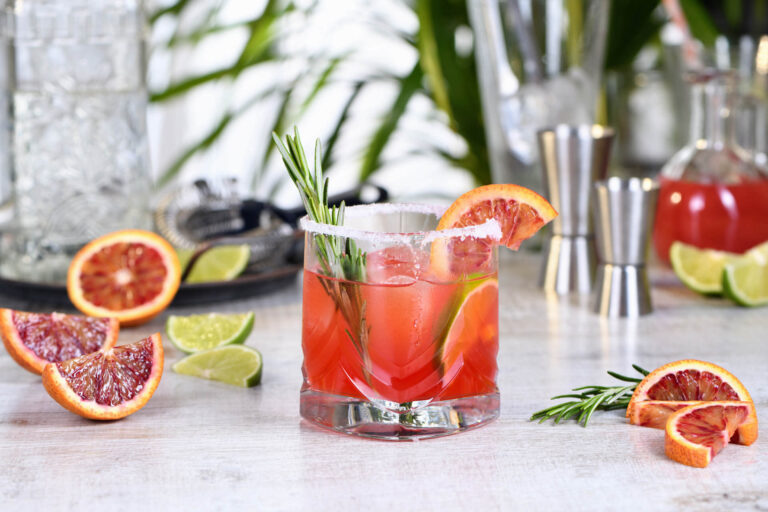12/06/2025
APAC redux: fresh opportunities in an evolving region
As overall growth slows, Asia Pacific’s beverage alcohol scene is undergoing significant change, with India and Southeast Asia emerging as key markets to watch – and China recalibrating with a new emphasis on casual consumption over prestige
Beverage alcohol brand owners will need to display agility and adaptability in order to unlock growth in the Asia Pacific (APAC) region in the years ahead, as shifting dynamics bring fresh opportunities across India and Southeast Asia in particular.
In a difficult year for the industry globally, the region was not immune to the challenges, with APAC’s total beverage alcohol (TBA) volumes falling by -2% in 2024, according to IWSR, the global authority on beverage alcohol data and intelligence. TBA value declined by -3%.
All major categories registered value declines, and only RTDs grew their volumes, by +1%. There were volume declines for beer (-3%), spirits (-2%, including national spirits) and wine (-4%). There is no consistent trend across the region, so looking deeper into individual countries is essential.
The year was marked by contrasting fortunes for the region’s two most populous countries, China and India. While the former saw its TBA volumes reduce by -5% amid declines for Cognac, Scotch whisky and baijiu, India’s TBA volumes expanded by +6% – and consumption of premium-plus products was up by +19%.
Elsewhere, the Philippines, Thailand and Vietnam all recorded TBA volume growth of +2%, there were TBA volume declines in Japan (-1%), South Korea (-1%) and Australia (-3%).
“With inflation stabilising and GDP expanding, India and the Philippines are leveraging demographic momentum to fuel TBA growth,” says Emily Neill, Chief Operating Officer Research and Operations. “Meanwhile, Japan and Thailand inch forward, and China continues to underperform, with the real estate crisis and weaker economic outlook significantly reducing the scope for TBA growth.
“While premiumisation is softening globally, Southeast Asia still offers room to grow value, supported by tourism, cocktail culture and rising affluence. In this slower-growth, value-led environment, staying invested in Asia’s beverage alcohol markets is vital. The region is evolving, with new opportunities emerging.”
All eyes on India
India’s strong gains in spirits consumption are increasingly broad-based: consumer knowledge is moving beyond the core whisky category, and persistently high levels of category experimentation are illustrated by the dramatic gains made by Irish whiskey (volumes up +58% in 2024) and vodka (+17%).
The recently agreed free trade agreement (FTA) between the UK and India, which will see import tariffs halved from 150% to 75%, then reduced to 40% within 10 years, should especially benefit Scotch whisky and UK gin. According to IWSR data, 86% of India’s imported whisky value growth came from Scotch in 2024, and 76% of imported gin value growth came from UK gin.
IWSR forecasts suggest that Scotch whisky volumes will grow at a CAGR of +7% between 2024 and 2029, with total gin volumes set to rise at a CAGR of +3% over the same timescale.
“The consumer appetite for Scotch in particular is set to drive growth for status spirits in India, and reduced tariffs are key to unlocking the market’s potential,” says Jason Holway, Senior Consultant India. “Confidence levels among upper-middle-class urban Indians remain high, thanks to growing disposable incomes. There is some evidence of a moderation trend emerging, but the net effect is small at present, with the rising number of new consumers entering the market.”
China: time to recalibrate
China’s underperformance in 2024 was led by sizeable falls for key categories such as baijiu (volumes down -5%), Cognac (-14%) and Scotch whisky (-8%). There were declines in terms of the total number of serves across beer, wine, spirits and RTDs.
While Cognac, Scotch whisky and baijiu were hit by the decline in formal consumption occasions, gin and vodka benefitted from the rising influence of cocktails, with standard-level products driving growth. Gin volumes grew by +20% in 2024, while vodka rose by +4%.
“China’s premium slowdown appears chiefly cyclical, due to economic pressures as consumers reprioritise value, casual occasions and relevance over prestige,” explains Shirley Zhu, Research Director – Greater China. “In a tougher, increasingly value-driven market, brands must recalibrate and lean into affordability, emerging categories and new occasions, as premiumisation stalls and traditional on-trade channels falter.
“However, despite demographic shifts, China remains a huge consumption market, and also has opportunities for global exports of baijiu.”
IWSR forecasts suggest mixed fortunes for China in the years ahead: while beer volumes between 2024 and 2034 are predicted to be flat, RTDs are expected to grow at a CAGR of +2%, sparkling wine at a CAGR of +5% and still wine flat. Spirits are expected to decline at a CAGR of -1%, but excluding baijiu the 10-year volume CAGR is +2%.
APAC spirits: category shifts
Across the APAC region, emerging spirits categories are gaining ground at the expense of traditionally popular segments, such as Cognac and Scotch whisky: while Cognac’s regional volumes slipped back by -11% in 2024 (and value slumped by -16%) and Scotch volumes were flat, there were strong gains (but off smaller bases) for Irish whiskey (volumes up +27%), Tequila (+14%), gin (+11%) and spirit aperitifs (+24%).
India drove the largest absolute volume gains (excluding national spirits) last year, although its +3% growth rate was eclipsed by the Philippines (+5%), where volumes were boosted by the continued growth of the large gin category.
IWSR expects overall spirits volumes across APAC to continue to decline this year and during 2026, before staging a recovery in 2027-29. India’s forecast growth will almost – but not quite – offset continued volume declines in China, mostly caused by baijiu.
APAC wine: slowing rates of decline
Wine endured another difficult year in the APAC region in 2024, with volumes down by -4%. However, that represented an improvement on the -8% decline recorded in 2023.
The still wine and other wines segments shrank by a combined total of 16m cases last year, registering volume declines of -5% and -4% respectively. Champagne’s fall accelerated, with volumes down by -8%, while other sparkling grew +1% after a difficult year in 2023.
IWSR is forecasting continued volume declines for wine to 2029, but at a progressively slower rate. Still wine’s struggles will be most evident in China (2024-29 volume CAGR of -2%), Japan (-1%) and Australia (-1%), with growth in the Philippines, India, Thailand and Vietnam offering some positivity.
The picture is brighter for sparkling wine, where Australia offers the greatest volume opportunity over the next five years (2024-29 volume CAGR of +2%). China (CAGR +6%), India (+8%) and Japan (+1%) are also expected to grow.
APAC beer: growth returns
IWSR forecasts predict that, following the -3% fall registered in 2024, APAC beer volumes will continue to decline this year, before returning to growth from 2026 onwards.
Six markets in particular will be key to future category growth, led by India (2024-29 volume CAGR of +3%), and also including Vietnam (+1%), Thailand (+1%), the Philippines (+1%), Indonesia (+3%) and Singapore (+1%).
However, declines are expected in Australia (CAGR -1%) and Japan (-2%), with China predicted to be essentially flat to 2029.
APAC RTDs: Japan drives gains
RTDs offer the strongest growth prospects in APAC in the coming years, cementing their status as the only category to record volume growth in the region during 2024, thanks to resilient performances in Japan and South Korea.
Japan will also be central to the category’s strong growth momentum over the next five years, thanks to the size of the market and a predicted 2024-29 CAGR of +3%. Further growth expectations are focused on China (CAGR of +2%), South Korea (+10%) and India (+6%). Australia, a previous driver of RTD growth, is not expected to add significant volumes in the years ahead.
The above analysis reflects IWSR data from the 2025 data release. For more in-depth data and current analysis, please get in touch.
CATEGORY: All | MARKET: Asia Pacific |
Interested?
If you’re interested in learning more about our products or solutions, feel free to contact us and a member of our team will get in touch with you.




